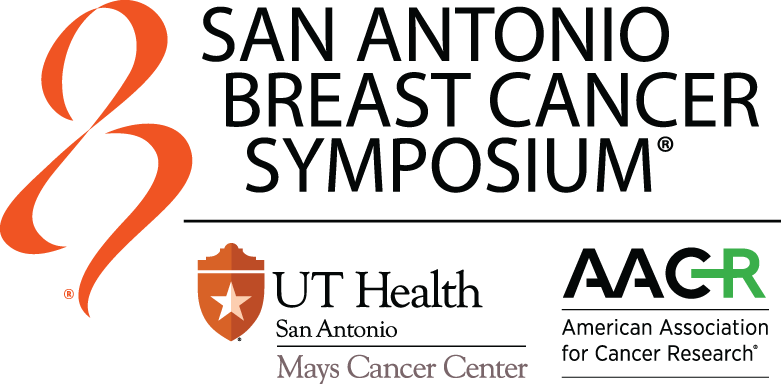
The final session of SABCS is always one of the most popular programs of the week, View from the Trenches: What Will You Do on Monday Morning? The session featured a multidisciplinary panel of experts discussing some of the most important breast cancer results from the meeting and putting the findings into context for day-to-day clinical practice.
HR+ Early Breast Cancer
Updated data from PALLAS and monarchE on adjuvant use of CDK4/6 inhibitors show conflicting results. PALLAS, which compared adjuvant palbociclib plus endocrine therapy to endocrine therapy alone, showed no difference in outcomes.
MonarchE, which compared adjuvant abemaciclib plus endocrine therapy vs. endocrine therapy alone, showed a 30.4% reduction in the risk of developing an invasive disease-free survival (IDFS) event for abemaciclib, with a 5.4% absolute difference at three years.

Key differences between the two trials are the CDK inhibitors used and the treatment schedule, said moderator Stephen RD Johnson, MS, PhD, Professor of Breast Cancer Medicine and Head of the Breast Cancer Unit at The Royal Marsden NHS Foundation Trust in London. PALLAS used intermittent CDKi dosing and monarchE used continuous dosing.
“This confirms information we have received before,” said Carlos Barrios, MD, Hospital São Lucas, Rio de Janeiro, Brazil. “Abemaciclib was approved in Brazil with a broader indication than in the United States and I am beginning to believe there are differences in the drugs and in the schedules. We should consider changing clinical practice. These patients with HR+ early breast cancer have a very bad prognosis. This is an opportunity to improve their outcomes.“
But follow up was only three years and HR+ EBC has a high recurrence rate over time.

“We need more data,” Dr. Barrios said. “I’m not sure that three years will be enough for a disease that recurs 10, 15 years later.”
Offering, or at least discussing, CKD inhibition makes sense, agreed Erika Hamilton, MD, Sarah Cannon Research Institute. Abemaciclib was approved by the Food and Drug Administration in October 2021.
“I am happy to offer this combination in the absence of long-term outcomes,” Dr. Hamilton said. “It is going to take time to see overall survival, and this approach is not without risk or adverse events. This is a conversation we have to have with our patients. In a high-risk population, it is likely worth it for many.”
A major meta-analysis of aromatase inhibitors (AIs) versus tamoxifen in premenopausal women with ER+ EBC on ovarian suppression showed an advantage in distant recurrence for AIs, particularly in node-positive disease, but there was no difference in breast cancer mortality.

A similar meta-analysis of HER2- EBC showed a greater benefit for AIs in higher risk patients, younger with more node-positive disease. But quality of life suffered.
“Most women have a very good response to tamoxifen,” commented Ann Partridge, MD, MPH, Dana-Farber Cancer Institute, “and most women are not high-risk. In high-risk disease, you get the biggest bang for your buck from AIs, but it is all about tolerability. Drugs don’t work in people who don’t take them.”

Breast cancer survivor and patient advocate Ivis Febus-Sampayo tried three AIs before finding one she could live with.
“I had such pain with two of the drugs that just getting out of bed was a problem,” she said. “You want to extend your life, but you also want to be able to live it. Why give women a medication they aren’t going to take?”
Early Breast Cancer
Updated results from RxPONDER found that postmenopausal women with node-positive, HR+/HER2- breasts cancer with a Recurrence Score (RS) of 0-25 did not benefit from chemotherapy followed by endocrine therapy vs. endocrine therapy alone. But premenopausal women with the same RS 0-25 showed a 44%-46% reduction in events when adding chemotherapy to endocrine therapy.

“The results from RxPONDER are very important,” noted Jorge Reis-Filho, MD, PhD, Memorial Sloan Kettering Cancer Center. “But they are not absolute. We have to interpret them in the clinical context, not just used as a number. Menopausal status and other factors are very important.”
Final results of the phase 3 MA.32A trial of metformin vs. placebo on recurrence and survival in EBC following standard of care found that metformin improved IDFS (HR=0.64) and overall survival (HR=0.53) in HER2+ patients after five years of follow up.
“The authors were very circumspect in their analysis,” said co-moderator Alastair M. Thompson, MD, Alsa Keith Weiss Chair of Surgery and Co-Director, Lester and Sue Smith Breast Cancer Center at Baylor College of Medicine. “They noted that metformin does not improve outcomes in most patients but that patients with diabetes taking metformin should continue their metformin. And while the trial was negative overall, an exploratory analysis in HER2+ cancers found benefit, and that patients with at least one C allele of the rs11212617 variant were particularly likely to benefit.”

The general lack of response to metformin is not a surprise, noted Javier Cortés, MD, International Breast Cancer Center, Barcelona, Spain, although the benefit in some HER2+ patients was not expected.
“Metformin is obviously not for all of our patients,” he said, “but there is a clear use in patients with diabetes, who were not in the trial at all, and perhaps for some HER2+ patients. We need more data, and to continue to explore.”

Triple Negative Breast Cancer
The KEYNOTE-522 trial of neoadjuvant/adjuvant pembrolizumab with or without chemotherapy for early stage TNBC showed clear benefit for pembrolizumab, HR=0.63 for event-free survival. The greatest benefit was in patients with pathologic complete response (pCR).
“This new combination is appropriate for a significant number of patients,” Dr. Cortés said. “But remember that when you achieve pCR in this kind of combination, you don’t know if it is due to pembrolizumab, chemotherapy, or the combination. We still don’t have enough data.”
A patient-level meta-analysis of taxane with or without anthracycline in early TNBC looked at 18,000 patients across 16 trials. Combination therapy showed a 15% decrease in recurrence over ten years for combination treatment, but no difference in mortality. Concurrent treatment is more effective than sequential therapy, HR=0.58 vs. HR=0.92.
“Anthracycline is not dead in all settings,” Dr. Hamilton commented. “For a lot of younger and higher risk patients, unfortunately, we still need anthracycline. We are using it less, but I don’t think we can get away from anthracycline altogether.”

Loco-regional Therapies
One of the key debates this year focused on the utility of one-week whole breast radiotherapy vs. conventional radiotherapy. The shorter 26Gy, 5Fr approach has become the de facto treatment approach during COVID-19, fueled by a preference to minimize hands-on treatment and trial results showing similar results to the more traditional 40Gy/15Fr approach.
“We have five years of clinical trials showing there is no concern about getting excellent control with fewer treatments,” said Meena Morgan, MD, Yale School of Medicine. “The only issue is which patients to select.”
Metastatic Breast Cancer
Early trials of selective estrogen receptor modulators (SERMs) and down-regulators/degraders (SERDs) show a 30% improvement in time to progression in metastatic breast cancer vs. aromatase inhibitors. These agents show greater response in ER+ tumors with an ESR1 mutation, found in about 20% of endocrine resistant ER+ breast cancers.
The EMERALD trial of elacestrant, the first oral SERD, vs. standard of care in advanced/metastatic breast cancer, found a similar hazard ratio of 0.697 for progression-free survival. In tumors harboring mutant ESR1, the hazard ratio dropped to 0.546.
“It is exciting research, but I’m not sure it has any clinical application yet,” Dr. Partridge said. “We need to see more data. It’s not ready for Monday morning.”

